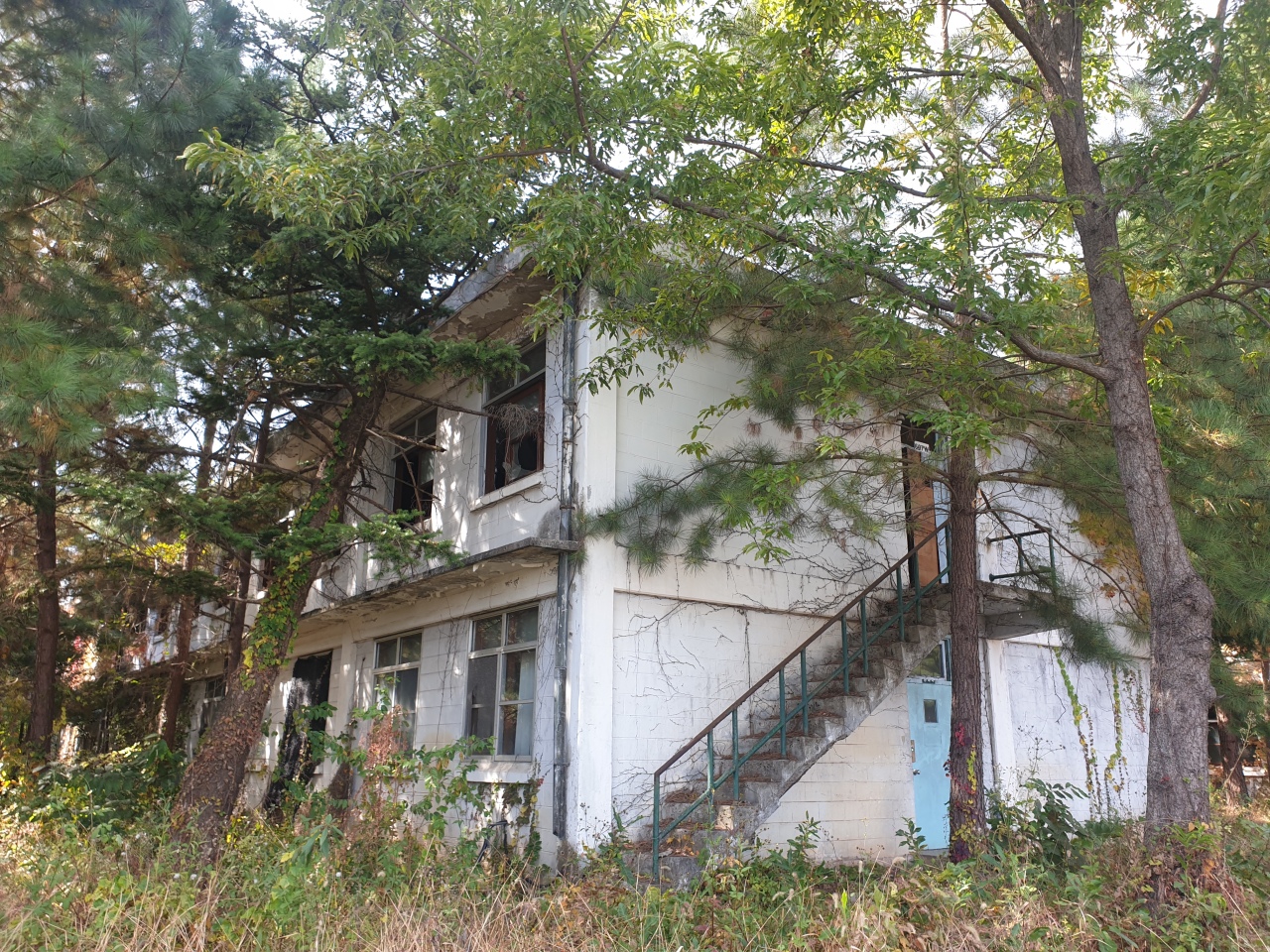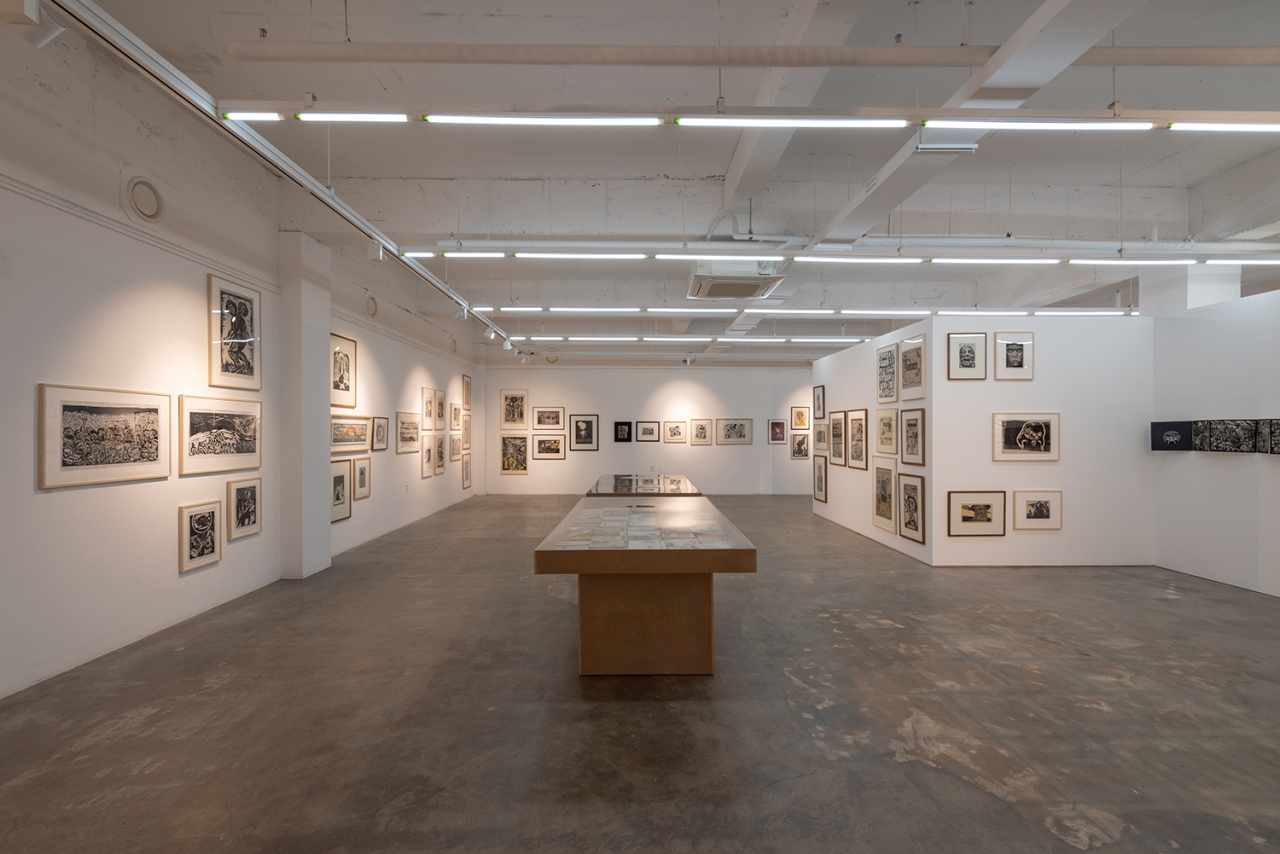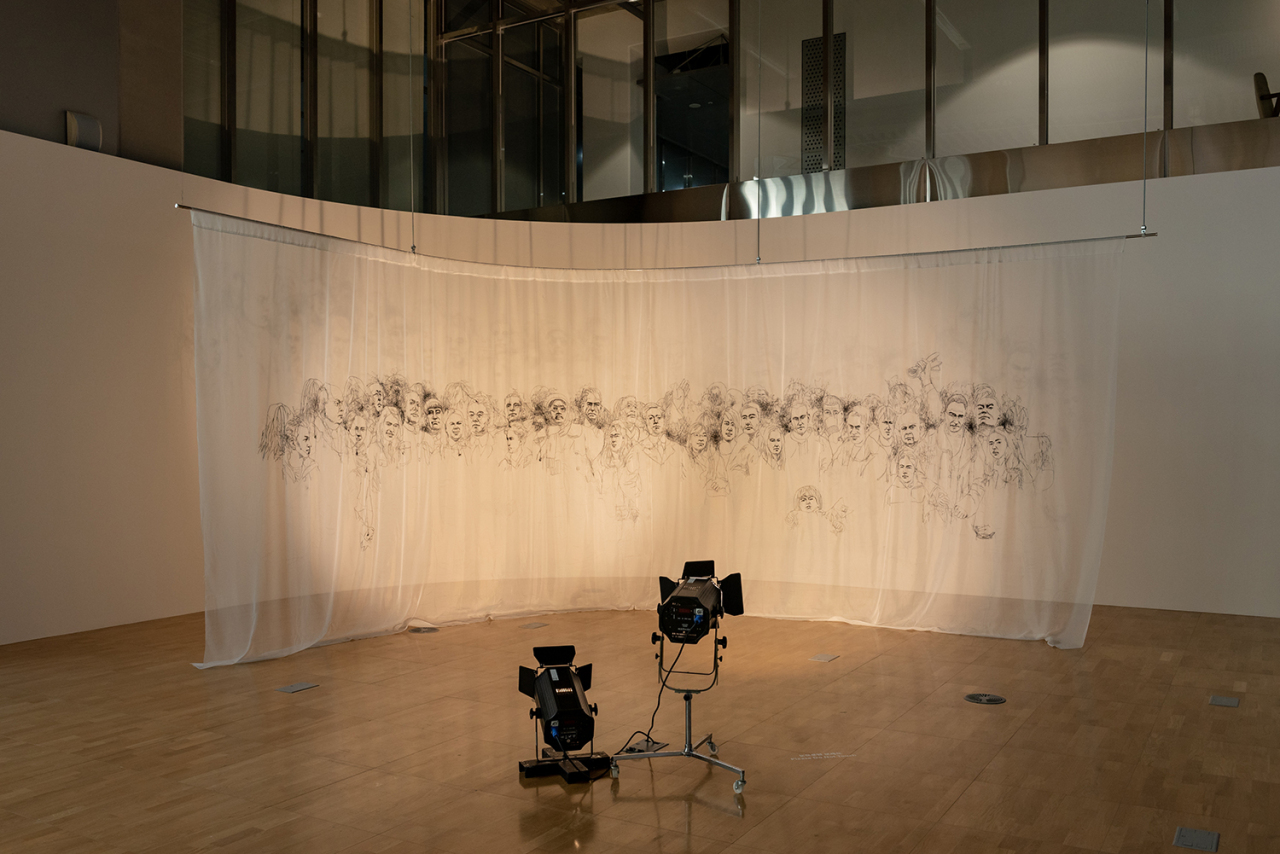 |
The former Armed Forces’ Gwangju Hospital (Park Yuna/ The Korea Herald) |
GWANGJU - A dingy building that once served as the Armed Forces’ Gwangju Hospital had remained closed for years. It had treated the people of Gwangju wounded during the May 18 Democratization Movement in the city, but at the same time was also covertly used to conduct investigations and torture those involved in the movement.
After the Army hospital moved to a different location in Gwangju as the city began to develop, the building was left vacant for more than 10 years, gradually forgotten to history.
The abandoned location is now open to the public as part of the special exhibition “MaytoDay,” commemorating the 40th anniversary of the May Democratic Uprising, organized by the Gwangju Biennale Foundation. The works by Japanese installation artist Chiharu Shiota, British installation artist Mike Nelson and Algerian French installation artist Kader Attia bring back memories of the pains and sacrifices.
 |
"The Language of God” by Chiharu Shiota at the former Armed Forces‘ Gwangju Hospital in Gwangju (Park Yuna/The Korea Herald) |
Forty years ago, South Korea’s major pro-democracy movement took place in Gwangju against military strongman Chun Doo-hwan, who came to power in a military coup in December 1979. The movement that arose against the military regime was first led by students and quickly spread to civilians who were angered by the military’s use of indiscriminate violence in suppressing Gwangju citizens.
More than 200 people were killed and some 3,000 wounded by the martial law troops mobilized to suppress the demonstrations. The number of casualties remains the highest since the Korean War.
One of the shabby rooms at the former hospital, once used as a chapel, is filled with Shiota’s installation “The Language of God,” an intricate entanglement of yarn and pages from a Bible appearing to embrace the lives that were sacrificed. The exhibition demonstrates the role of art in society, as a reminder of the historic event through the art works installed at an important place in history as it fades away.
“MaytoDay,” which runs through Nov. 29, is being held at three different locations in Gwangju: the former Armed Forces’ Gwangju Hospital, Mugaksa’s Lotus Gallery and the Asia Culture Center.
 |
The installation view of “Woodcut Prints in the 1980s: A Testimony of Resistance, A Memory of Movement” at Mugak Temple‘s Lotus Gallery in Gwangju (Gwangju Biennale Foundation) |
The exhibition project “Woodcut Prints in the 1980s: A Testimony of Resistance, A Memory of Movement” is being held at the temple Mugaksa’s Lotus Gallery. Woodcut printing is considered among the most significant art genres of the 1980s, testifying to the period of sociopolitical unrest. The woodcut prints of the conflict-ridden city of Gwangju remain crucial examples of resistance art in Korean art history.
More than 200 woodcut prints by 55 artists who witnessed the pro-democracy movement and could not ignore the ruthless military regime in the 1980s are on display.
The special exhibition includes the global project “MayToDay” that compromises a series of exhibitions curated in Seoul, Taipei, Taiwan, Cologne, Germany, and Bueno Aires, Argentina, this year under the theme of democracy. The Gwangju edition of “MaytoDay” reorganized the four exhibitions featuring works of art that were exhibited in the participating cities, touching on a wide range of social issues.
 |
“Double Encounter” by Hong Young-in at the Asia Culture Center (Gwangju Biennale Foundation) |
The project that compromises the four exhibitions of “Spring of Democracy” from Seoul, “Myths of the Near Future” from Bueno Aires, “MaytoDay: DemoStream in Democracy” from Taipei and “Gwangju Lessons” from Cologne can be seen at the Asia Culture Center.
By Park Yuna (
yunapark@heraldcorp.com)










![[Today’s K-pop] Blackpink’s Jennie, Lisa invited to Coachella as solo acts](http://res.heraldm.com/phpwas/restmb_idxmake.php?idx=644&simg=/content/image/2024/11/21/20241121050099_0.jpg)
